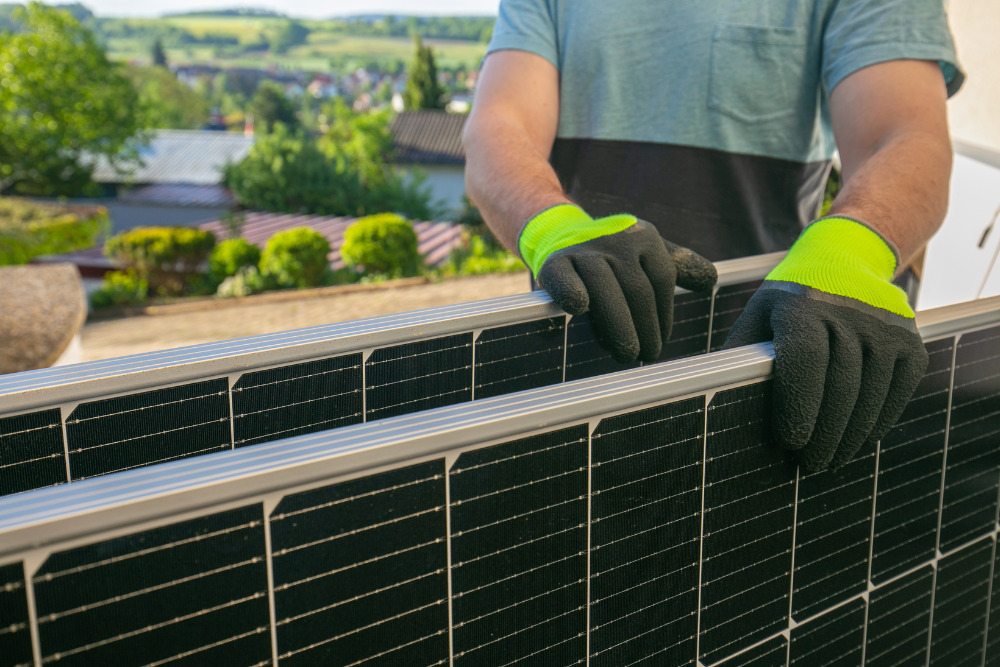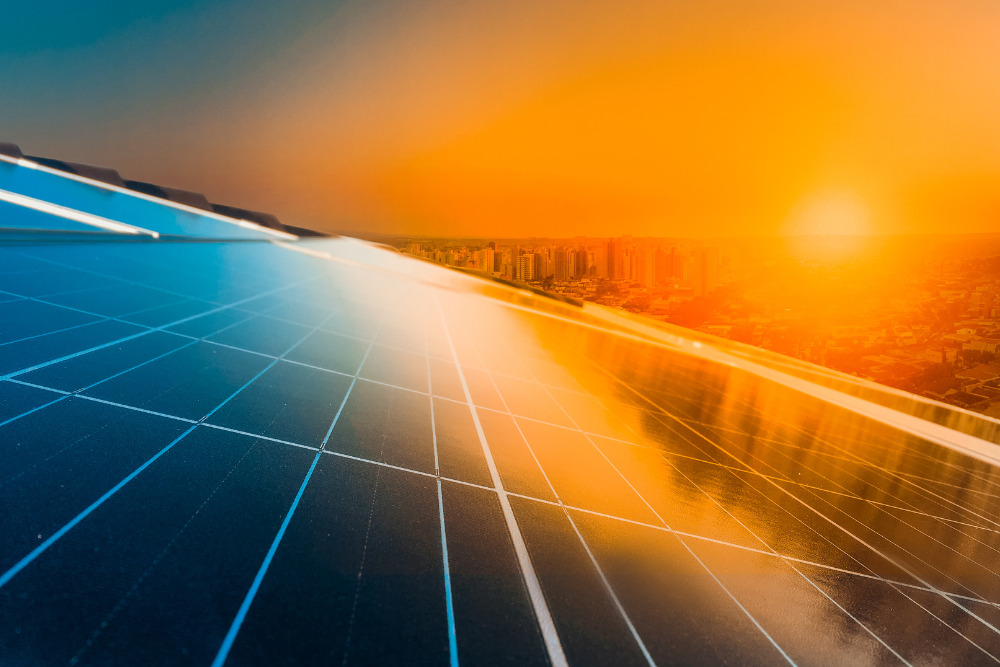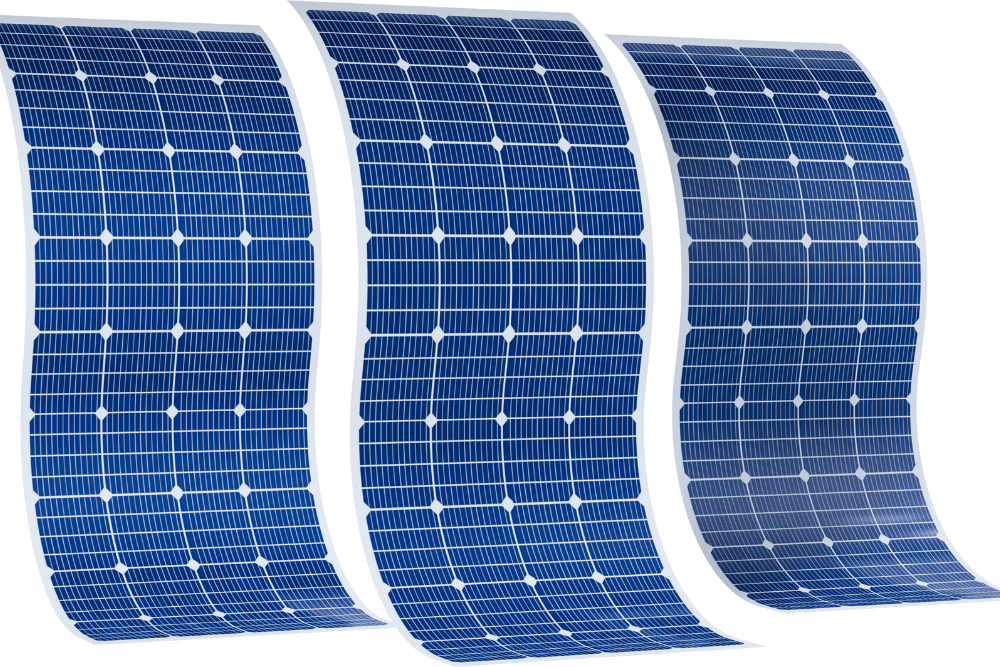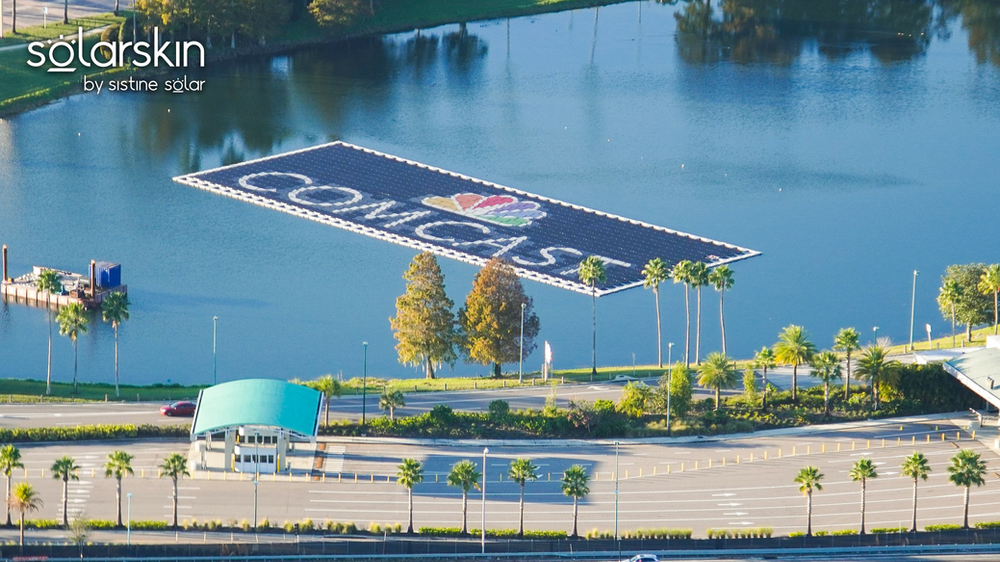
Typically there are four types of commercial solar panels: monocrystalline solar panels, polycrystalline solar panels, thin-film solar panels, and PERC solar panels.
All solar panels work by converting the sun’s photons into electrons that are then converted from DC to AC power by an inverter. Solar panel efficiency depends on the manufacturing process, materials used, and how the module is oriented on a business’s usable roof space.
If you’re considering commercial solar panel installation to reduce your business’s carbon footprint and electricity bills, your installation company will talk to you about these four types of panels.
4 Types Of Commercial Solar Panels
Monocrystalline solar panels
Monocrystalline panels are made using monocrystalline silicon cells. Each solar cell comprises a single silicon crystal, making them the most efficient solar panel type.
Features of monocrystalline panels include:
- High efficiency ranges from 17-20%, with some high-end panels exceeding 20%.
- Because their energy output is higher, they’re more space efficient so you'll need fewer panels than other panel types for the same power output.
- High temperature tolerance and can perform in various weather conditions.
- They have the longest lifespan, with many manufacturers offering a warranty of 25 years.
- The pure silicon gives monocrystalline panels a smooth unified look, and the all black panels are ideal for custom-printed SolarSkin applications.
- The downside of monocrystalline solar panels is that manufacturing technique requires a lot of energy and involves a lot of silicon waste.
- The improved performance yet inefficient manufacturing process makes mono panels one of the most expensive options.

Polycrystalline solar panels
Polycrystalline panels are famous for their characteristic blue color. Like monocrystalline, polycrystalline panels are made from silicon cells. However, instead of a single silicon crystal, their cells comprise multiple silicon fragments melted and poured into square molds.
Features of polycrystalline panels include:
- Polycrystalline solar panels are less energy efficient, reaching 15-17%.
- Lower solar power output means you'll need more panels, thus more space for installation, than when using monocrystalline panels for the same energy requirements.
- Lower heat tolerance means they don’t perform as well at extremely low or high temperatures.
- The manufacturing process is cheaper with little or no waste.
- The blue color and white back sheet and frames give polycrystalline panels a less unified look and the waffle design may show through SolarSkin overlays.
- The efficient manufacturing process and lower performance makes poly panels more affordable for businesses that need a large installation and want to save upfront costs.
Thin-film solar panels
Thin-film solar panels are more flexible and lightweight than crystalline silicon panels, and their thin film solar cells are hundreds of times thinner than other solar panels.
Features of thin-film panels include:
- They can be custom sized to fit any space, unlike the standard 60/72/96 sizes of mono and polycrystalline panels.
- Due to their light weight and flexibility, these panels are suitable for roofs that can't handle the extra weight of other solar panels or for odd-shaped roofs.
- They have a lower efficiency that varies depending on the type of thin-film panel:
- Amorphous silicon panels (A-Si): as the name implies, they are shapeless and only comprise a small fraction of silicon. Therefore, they're the most cost-efficient and flexible but least energy efficient at 6-8%.
- Cadmium telluride (CdTe): made of cadmium telluride, a highly toxic material. Like their counterparts, these panels are cost-effective but produce higher energy than the amorphous type. However, their energy efficiency of 9-11% is still lower compared to crystalline panels.
- Copper indium gallium selenide (CIGS): made from thin layers of copper, indium, gallium, and selenium, which make them the most energy-efficient thin film panels with an efficiency of 13-15%. However, the materials are toxic, and the process is costly, making them the most expensive thin-film panels.

PERC solar panels
Passivated Emitter and Rear Cell (PERC) panels are a modification of monocrystalline panels. The improvement involves adding a passivation layer on the back of the cells to enhance energy efficiency and increase power output.
The passivation layer improves energy efficiency by reflecting light back to the silicon layer, increasing the amount of radiation the cells absorb.
Features of PERC panels include:
- The highest efficiency rating of all panels, some PERC panels can reach a 25% efficiency.
- Ideal for high-energy requirement applications with minimal installation space.
- Manufacturing is similar to monocrystalline panels, so they’re not much more expensive.
- High efficiency and output means businesses will achieve ROI faster on their solar energy project.
- Able to perform in extreme weather conditions, and because the cells absorb more light, PERC panels can be used in spaces where traditional solar might not be ideal.
What's The Best Type Of Solar Panel For Commercial Use?
The best solar panels for commercial use are PERC and monocrystalline. With more efficient PV cells and greater power capacity, solar power systems composed of these panels take up less space and have a shorter payback period.
What Is The Most Affordable Commercial Solar Panel?
The most affordable commercial solar panel is the thin-film panel. They are cheaper than crystalline and PERC solar panels. However, they're the least energy efficient, and you'll need a large installation space and many panels to generate the same amount of energy.
If you want affordability without compromising efficiency, polycrystalline is the next best option.
Using Solar Panels For Branding
Did you know you can have a solar system that bears your brand name, colors, icon, or anything representing your business?
With SolarSkins overlays, you can say goodbye to high electric bills and embrace renewable energy with a custom branded solar panel system. SolarSkin creates a unique and spectacular solar array that draws attention while dramatically reducing energy costs.
They can even improve your customer experience by providing reliable power sources in the most unlikely places. For instance, if you're in the hotel business, you can build a solar-powered canopy that provides a relaxing space while recharging your guests' phones as they sit underneath it.
SolarSkin overlays are compatible with all different types of solar panels and can be adapted to any roofing design.



